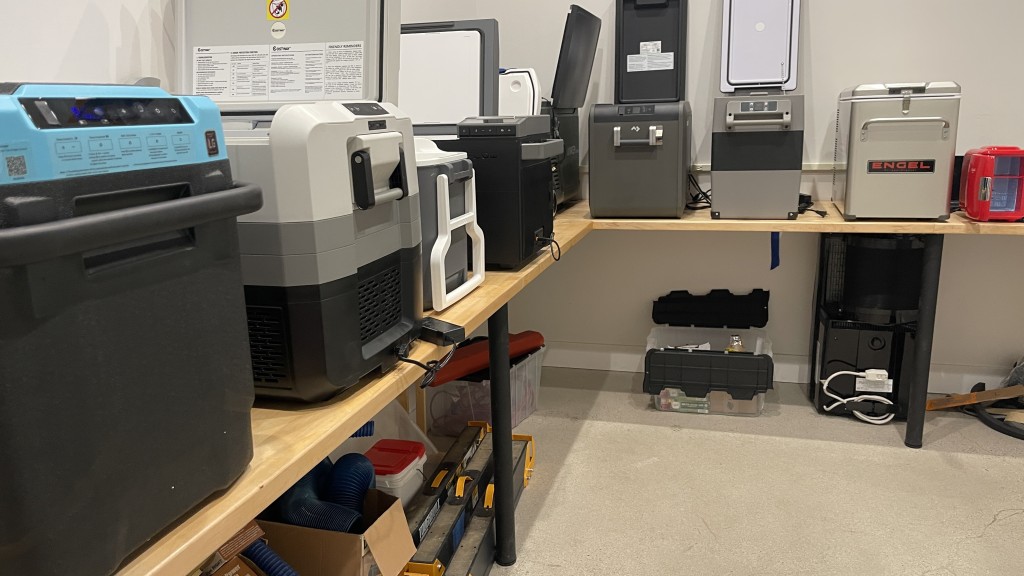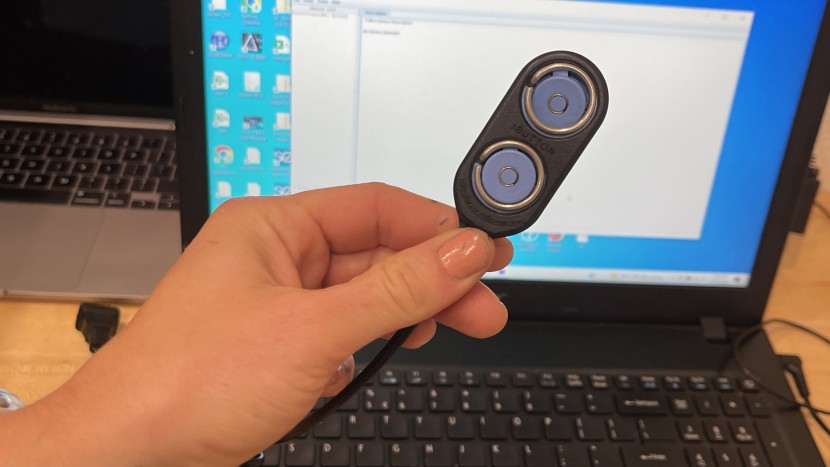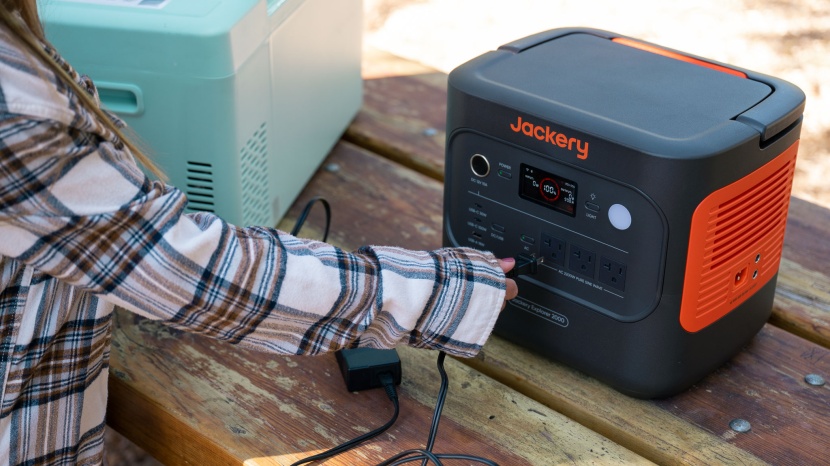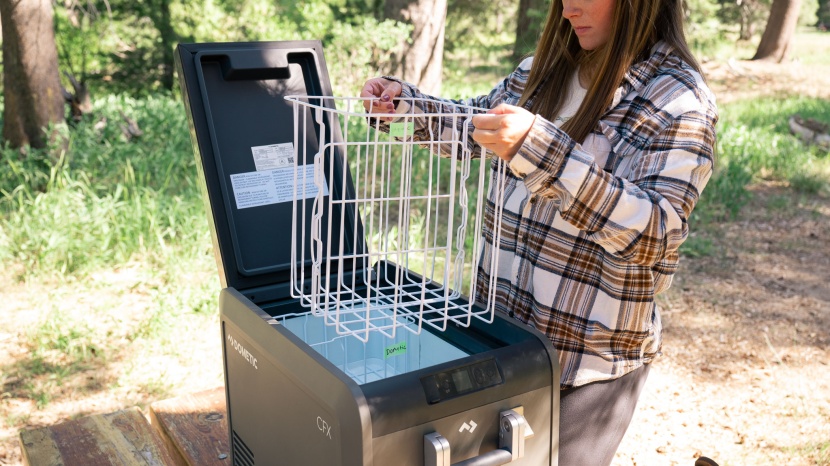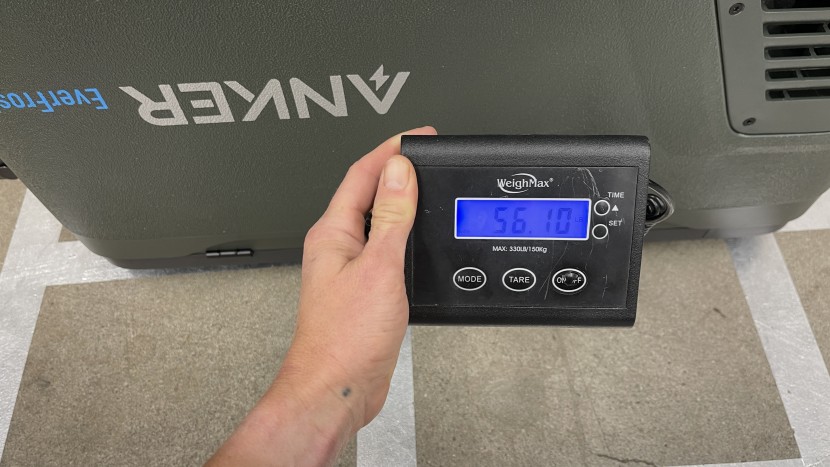The powered coolers market can be a confusing one. With so many different methods of powering a cooler and various technologies to keep the contents cold - or even hot! - it can cause quite the headache to wade through this veritable sea of endless specs and technical jargon. It's our goal to simplify this unnecessary confusion into real, tangible, and comparable results that you can understand. We designed and carried out a comprehensive testing plan to bring all our powered coolers onto the same playing field, making them easily comparable to one another, and here's how we did it.
Temperature Control
The ability to control internal temperature without needing ice is what truly sets powered coolers apart from traditional hard coolers. For this reason, temperature control is one of the most important aspects of an electric cooler. We tested each cooler using repeatable, scientific methods to see how each model truly compared to the others, regardless of what cooling method they use. We also compared the real results of these tests to claims made by each manufacturer to let you know which claims are accurate and which are just wishful thinking.
Using iButton technology, which allows you to monitor the temperature of anything remotely and over a long period of time, we tested the minimum and maximum temperatures of every cooler. With the iButton data, we measured the difference between the actual internal temperature of each cooler with what the external setting says it is.
We set every model to its lowest possible temperature setting and let them run to see just how cold they could actually get in the Minimum Temperature Test. We cranked up the temperature on coolers boasting a heat setting to see how toasty their contents could get for our Maximum Temperature Test. And through all of it, we measured and compared the actual temperature inside each cooler to the temperature claimed by the external display (for models that have an external display!) to see how accurate each was.
Time to Cool
Time to cool is nearly as important as temperature regulation, because if your cooler can't get drinks cold, then you'll be seriously limited when selecting your beverage of choice on your next adventure. So, we weighted Time to Cool almost as high as temperature control.
We tested time to cool by filling every cooler half full of room temperature cans. Then we set every compressor model to 35 degrees (or 34 degrees if you can only adjust temperature in even-numbered increments). Thermoelectric models were set to “cool,” or the coldest possible setting. Then, we used our trusty iButtons to monitor how quickly each packed cooler went from room temperature to a chilly 35 degrees.
Energy Consumption
Unless you're planning to replace your home fridge with one of these little guys, the amount of energy they consume is probably pretty close to the top of your list in importance — ours too! We ranked this metric as just barely below temperature control and time to cool in importance.
Powered cooler manuals and websites are full of specs that they seem to hope to confuse anyone who's not an electrician or engineer of some kind. We put those claims to the test, not only against the manufacturer's claims but also in realistic settings that you're likely to find yourself in with your own powered cooler.
We tested the power draw of each model while it was operating at a steady state after having reached the desired temperature of 35°F. We also measured the voltage and current of each model, so you can easily compare it to the capacity of the battery in your weekend camping setup to know without question if you can power each cooler easily or if you'll need to unplug it every night when your solar camping panels are useless.
Many powered coolers also boast handy settings that manufacturers claim to help you conserve energy or save your battery from being so run down you'll need a jump to get going again. We tested how energy-saving these settings actually are, so you know exactly what you're getting yourself into before you lose hundreds of dollars of groceries to a dead battery on your next adventure.
Ease of Use
How well any piece of gear functions is always the most important aspect. However, if it's a total pain in the bum to use, you're unlikely to be excited about taking it out to play during your adventures. Despite our heavily technical testing, we recognize that this is just important for powered coolers. We carefully evaluated the usability of each cooler as we loaded and unloaded their contents, turned them on and off, plugged them into walls and external batteries, and carted them around on excursions.
We measured the internal dimensions of each model and calculated their capacity compared to what the manufacturer claims. We also filled every cooler with as many 12-oz. cans as we could stuff in and still close the lid, to give a realistic measurement of how much food (or beverages) you can fit into each one. We also judged the helpfulness of each manual, as this is one appliance you don't want to use without reading the manual thoroughly! Additionally, we scoured each cooler for helpful little features like adjustable shelves, drain plugs, removable baskets and lids, reversible hinges, and internal lighting.
Portability
While powered coolers are generally less portable than anything not plugged into a wall, they're more portable than your kitchen fridge for a good reason - adventuring!! First and foremost, we weighed and measured the dimensions of each model. It seems every online source claims a different size for each cooler, and we wanted to compare what they actually weigh directly. Regardless of their actual sizes, we lugged all of them around - up and down stairs, in and out of cars, full of food and drinks and empty - to see how doable it was for one or two people to accomplish with minimal panting or cursing. We checked each model for its ability to work in dicey situations, like driving down dirt roads that are more boulder and pothole than road, and its ability to operate at an angle frequently achieved while boating on a choppy lake or off-roading experience.
While carting these coolers around, we tested the usability of portability features, like handles and wheels. While only a few models we tested have wheels, they all have handles of varying comfort and utility. Some models are well-balanced, making them easier to carry, while others are asymmetrical in design, adding to their awkwardness. We also noted what cords and adapters came with each model compared to what you actually need for versatile functionality. We plugged every cord in to see just how far from an electrical outlet you can place your cooler - will it reach from the back of your suburban, or do you have to yeet the dog from their throne to stash the cooler in the front seat instead?
Noise
We compared how loud each model is when it runs, as no one wants to sleep next to an appliance that angrily buzzes a loudly like a swarm of angry bees all night! To test noise, we slept in a quiet room with only the cooler in there with us. We also paid attention to how often each cooler kicked on and the noise quality (or lack thereof). We noted which coolers stood out in terms of noise in a room full of powered coolers.
After spending months testing, retesting, and adding additional tests to challenge these powered coolers, we feel we have developed a deeper understanding and more complete picture of the capabilities of these powered coolers. We hope that by bringing you these results and direct comparisons, we can help you find the perfect powered cooler to upgrade your adventurous lifestyle.

